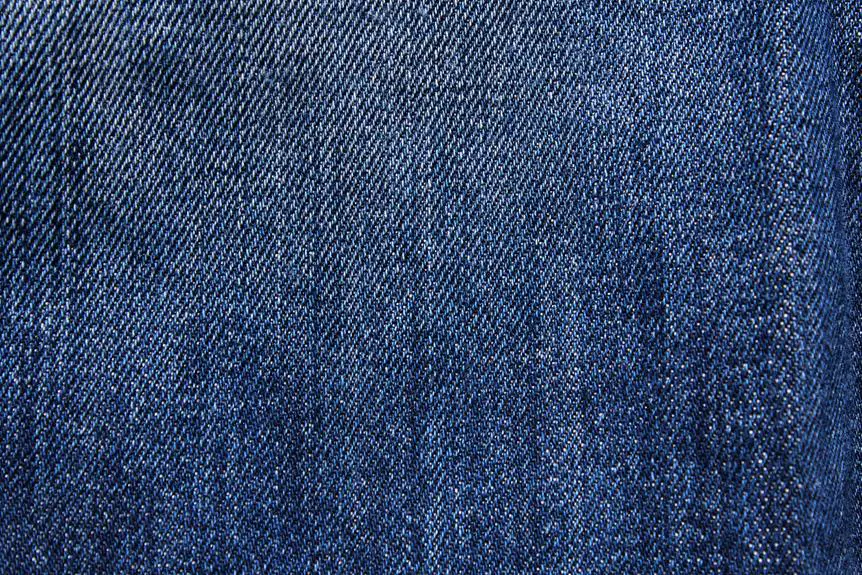Do you ever wonder why your jeans constantly sag, despite your best efforts to keep them fitting just right? Understanding the factors that contribute to this common denim dilemma is essential for mastering the art of a perfect fit.
In this fabric fitting guide, we'll delve into the nuances of denim stretch, the impact of seam placement, choosing the right rise, the importance of fabric weight, exploring fit adjustments, and maintaining shape and structure.
By mastering these key elements, you'll be equipped with the knowledge to ensure your jeans maintain their shape and fit flawlessly, no matter how many times you wear them.
Key Takeaways
- Denim elasticity and fabric composition determine the amount of stretch in jeans and how well they fit over time.
- Seam placement plays a crucial role in the overall fit and comfort of jeans, with strategically placed inseams and flat-felled seams enhancing the structure and silhouette.
- Choosing the right rise of jeans is important for both fit and flattery, with low rise creating a casual look and high rise providing coverage and support.
- Considering body shape and rise placement is essential for a flattering fit, as different rise choices can either lengthen or shorten the torso and legs.
Understanding Denim Stretch
If you're wondering why your jeans constantly sag, understanding denim stretch can provide insight into this common issue. Denim elasticity is a crucial factor in how well your jeans fit over time. The fabric composition plays a significant role in determining the amount of stretch that denim can offer.
When denim contains a higher percentage of elastane or spandex, it tends to have more stretch, allowing for better shape retention and a snug fit. On the other hand, denim with a lower percentage of these stretchy fibers may sag and lose its shape more easily.
Fabric composition is key to understanding how your jeans will behave with wear. A blend of cotton with elastane or spandex creates a stretchy denim that molds to your body, providing a comfortable and flattering fit. However, a higher percentage of stretch fibers doesn't always mean better quality.
It's essential to strike a balance between stretch and recovery to ensure that your jeans maintain their shape without sagging. Understanding denim stretch and fabric composition empowers you to make informed choices when selecting the perfect pair of jeans.
Impact of Seam Placement
Frequently, seams play a crucial role in determining how well your jeans maintain their shape over time. Seam placement effects fabric tension and ultimately influences how your jeans fit.
The positioning of seams can impact the amount of stretch in different areas of the garment. For instance, a strategically placed inseam can enhance the overall fit and comfort of the jeans by allowing for better movement and reducing strain on the fabric. Stitching techniques also come into play here.
For example, flat-felled seams are commonly used in denim construction to create a sturdy and flat finish, which can contribute to a more structured fit. Additionally, seam placement can also allow for fit adjustments.
For instance, the placement of the outer leg seam can affect the silhouette of the jeans and how they contour to your body. Understanding the impact of seam placement and its relationship to fabric tension and stitching techniques is crucial for achieving the perfect fit and ensuring that your jeans maintain their shape over time.
Choosing the Right Rise
When choosing the right rise for your jeans, understanding the difference between low and high rise is crucial.
The rise of your jeans has a significant impact on how they fit and flatter your body shape.
Consider your body shape when deciding between low and high rise to ensure the most comfortable and flattering fit.
Low Vs. High Rise
When choosing the right rise for your jeans, consider the difference between low and high rise options for the best fit.
Here's a quick breakdown to help you make the right choice:
- Low Rise: These sit lower on your hips and are ideal for creating a casual, modern look. They're great for petite individuals and can make your torso appear longer.
- High Rise: These sit at or above your natural waist, providing excellent coverage and support. They're perfect for elongating the legs and creating a more classic, tailored appearance.
- Consider your body type and personal style when making a choice between low and high rise options.
- Keep in mind that the rise can significantly impact the overall comfort and look of your jeans.
Impact on Fit
To ensure your jeans fit comfortably and flatteringly, it's crucial to choose the right rise that complements your body type and personal style. The impact of rise on fit adjustments is significant.
A higher rise can provide more coverage and support, making it a great option for those with a curvier figure or anyone seeking a more secure feel. On the other hand, a lower rise can elongate the torso and offer a more casual, modern look.
When selecting the appropriate rise, consider fabric composition as well. Stretch denim with a higher synthetic fiber content tends to offer more give, making it easier to achieve a comfortable fit, while non-stretch denim may require more precise sizing to ensure a perfect fit.
Understanding these factors will help you make informed decisions when choosing the right rise for your jeans.
Body Shape Considerations
Consider your body's shape and proportions when choosing the right rise for your jeans. The right rise can make a significant difference in how your jeans fit and flatter your body. Here are some fit adjustments to keep in mind:
- High-rise jeans are ideal for those with a longer torso, as they create the illusion of a shorter torso and longer legs.
- Mid-rise jeans work well for most body shapes and are a versatile option that provides a balanced look.
- Low-rise jeans are best suited for individuals with shorter torsos as they can elongate the upper body.
- Consider the placement of the rise to ensure a comfortable and flattering fit that complements your body shape.
Importance of Fabric Weight
Choose a denim fabric with a substantial weight to prevent sagging in your jeans. The fabric weight is an essential factor in determining the durability and stretch factor of your denim. When it comes to preventing sagging, heavier denim is your best ally.
The weight of the fabric, typically measured in ounces per square yard, impacts how well your jeans will hold their shape over time. A heavier weight denim, such as 12 ounces or more, provides better support and structure, reducing the likelihood of sagging, especially in areas like the knees and seat. The added weight helps the denim maintain its form, preventing it from stretching out and losing its shape with wear.
Additionally, heavier denim tends to have less elasticity, which can further contribute to maintaining the jeans' silhouette. When shopping for jeans, pay attention to the fabric weight listed on the tag or product description. Opting for heavier denim won't only minimize sagging but also ensure a more durable and long-lasting pair of jeans.
Exploring Fit Adjustments
So, you've got your favorite pair of jeans, but they just don't quite fit the way you want them to. Don't worry, we've got you covered.
We'll be discussing how to prevent denim bagging, adjusting the waistband for a better fit, and troubleshooting any loose-fitting issues you may have with your jeans.
Let's get those jeans fitting just right!
Preventing Denim Bagging
To prevent denim bagging, make sure that the jeans fit snugly around your waist and hips, as this will help maintain their shape over time. Here are some fit adjustments to consider:
- Choose the Right Size: Ensure you select the correct size to avoid fabric shrinkage issues that can lead to bagginess.
- Belt Tightening Solutions: Opt for a well-fitting belt to keep your jeans in place and prevent sagging.
- Tailoring: Consider getting your jeans tailored to achieve a perfect fit around your waist and hips.
- Fabric Selection: Look for jeans made with a blend of materials that offer better shape retention to prevent bagging over time.
Adjusting Waistband for Fit
Ensure your jeans fit snugly around your waist and hips to prevent sagging by adjusting the waistband for a perfect fit. Waistband alterations can make a significant difference in the way your jeans fit.
If your jeans are sagging at the waist, you can consider taking in the waistband by sewing a new seam, or using a belt to cinch the waist for a better fit.
On the other hand, if your jeans feel too tight, you might need to let out the waistband by either adding a stretch panel or inserting a triangular piece of fabric to expand the waistband.
These fit modifications can help you achieve a more comfortable and flattering fit, ensuring your jeans stay in place and maintain their shape throughout the day.
Troubleshooting Loose-Fitting Jeans
If your jeans are consistently sagging, try adjusting the fit to prevent loose-fitting by experimenting with different adjustments for a better overall fit. Here are some troubleshooting tips to help you address the issue:
- Belt Solutions: Consider using a belt to cinch the waist of your jeans for a more secure fit. This can help prevent the jeans from sagging and create a more tailored look.
- Tailor Options: Consult with a professional tailor to explore alterations that can be made to the waist or seat of the jeans for a custom fit that eliminates sagging.
- Elastic Band: Look for jeans with an elastic band incorporated into the waistband for added flexibility and a snugger fit.
- Waistband Extender: Utilize a waistband extender to add extra room to the waist without compromising the overall fit of the jeans.
Maintaining Shape and Structure
You can maintain the shape and structure of your jeans by following these simple care instructions.
To preserve the shape, turn your jeans inside out before washing to protect the fabric's elasticity. Use a gentle cycle with cold water to prevent excessive stretching or shrinking.
Additionally, avoid overloading the washing machine, as overcrowding can lead to friction and distortion of the fabric.
When drying your jeans, opt for line drying or using a low-heat setting on the dryer to prevent damage to the fibers and maintain their original shape.
Furthermore, store your jeans flat or folded neatly to prevent unnecessary stretching or creasing.
If you need to iron your jeans, always do so inside out and with low heat to avoid weakening the fabric's elasticity.
Frequently Asked Questions
How Can I Prevent My Jeans From Sagging After Wearing Them for a Few Hours?
To prevent your jeans from sagging after a few hours of wear, reinforce the seams and choose denim with minimal stretch. This will help maintain the shape and fit of your jeans, keeping them looking great throughout the day.
What Is the Best Way to Preserve the Shape of My Jeans, Especially in the Waist and Knee Areas?
To preserve your jeans' shape, focus on reinforcing the waistband to prevent stretching and providing support to the knee area. Use techniques like adding interfacing or sewing in elastic to maintain the original fit.
Are There Specific Fabric Weights That Are More Prone to Sagging, and How Can I Avoid Them?
To avoid sagging, pay attention to fabric maintenance and denim care. Different fabric weights can affect durability and weight distribution, leading to sagging. Lighter weights may sag more, so opt for heavier weights to maintain shape.
Can the Type of Stitching Used in the Seams of Jeans Affect How They Fit and Sag Over Time?
Yes, the type of stitching used in the seams of jeans can significantly affect how they fit and sag over time. Thread quality and stitching techniques, along with denim stretch and fabric composition, play a crucial role.
What Are Some Fit Adjustments I Can Make to Prevent My Jeans From Sagging, Such as Alterations or Tailoring Techniques?
To prevent sagging, consider alteration techniques like taking in the waistband or tapering the legs. Tailoring options include adding darts or using elastic inserts. These adjustments can help you achieve a personalized fit and maintain the shape of your jeans.
- How Does Ring Spun Cotton Affect Garment Fit and Shape Retention? - August 13, 2024
- What Are the Challenges in Producing Ring Spun Cotton? - August 13, 2024
- Is Ring Spun Cotton Suitable for Plus-Size Clothing? - August 13, 2024





